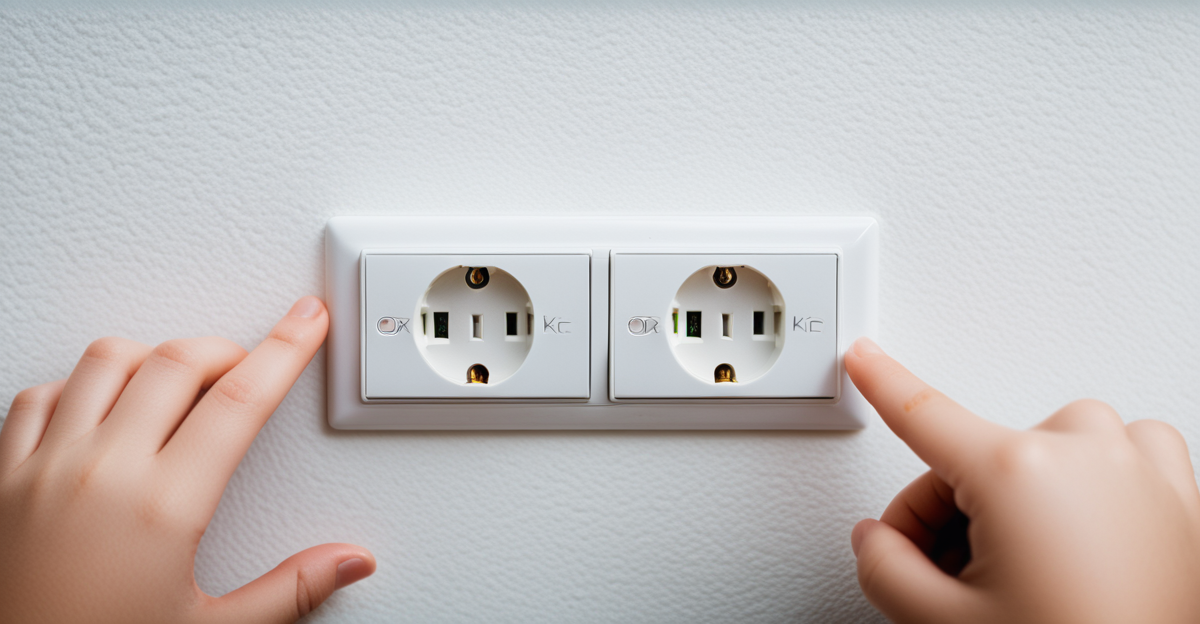Essential electrical outlet safety for UK households
Ensuring electrical outlet safety in UK homes is crucial, especially for families with young children. Electrical outlets pose significant risks such as shocks or burns, which can lead to severe injuries. According to recent data, a notable percentage of accidents involving children at home relate directly to tampering with sockets or plugs.
Parents and caregivers can implement immediate protective measures to reduce these risks. First, using robust child safety devices like outlet covers or socket shutters is essential. These products physically block access, preventing curious toddlers from inserting objects or fingers. Second, constant supervision in rooms with multiple outlets, especially living rooms and kitchens, helps spot unsafe behaviors.
In the same genre : Ingenious tips for uk homeowners: boost your front door’s efficiency to retain heat and cut down energy waste
Moreover, teaching children about the dangers of electricity early on can reinforce safe habits over time. Simple tactics, including setting clear rules and demonstrating what not to touch, empower children to understand and respect electrical hazards.
These practical steps support effective electrical hazard prevention in UK homes, safeguarding families by minimizing the chance of accidents. Combining physical barriers with education and vigilance forms the backbone of a reliable safety strategy, essential for any household.
Also to discover : The complete uk homeowner’s handbook to sustainable backyard composting: step-by-step eco-friendly waste management solutions
Essential electrical outlet safety for UK households
Understanding the key risks posed by electrical outlets in UK homes is fundamental to effective electrical outlet safety UK. Children are particularly vulnerable due to their natural curiosity, which increases the risk of electric shock, burns, or even more severe injuries when they come into contact with exposed or faulty outlets. Recent statistics highlight that a considerable number of household accidents involving children are linked to tampering with sockets or using damaged plugs.
Immediate steps for parents to improve child safety include installing secure outlet covers or socket shutters that comply with UK safety standards. These act as physical barriers, significantly reducing the chance of children inserting objects or fingers into outlets. Moreover, routinely checking outlets for wear or damage enhances electrical hazard prevention, preventing dangerous situations before they arise.
Another practical measure is organizing living spaces to keep electrical cords out of reach and avoiding overloading sockets with multiple appliances. Finally, combining these actions with clear instructions about the dangers of electricity helps reinforce safe behaviors in children, creating a safer home environment consistent with the goals of electrical outlet safety UK.
Essential electrical outlet safety for UK households
Ensuring electrical outlet safety UK starts with recognizing the specific key risks electrical outlets pose to children in domestic environments. Curious toddlers often explore by inserting objects or fingers into sockets, risking electric shocks or burns. According to recent incident data, these hazards contribute to a significant proportion of domestic injuries in the UK each year, underscoring the necessity of proactive measures.
Parents should first evaluate outlets in commonly used rooms, as high-traffic areas increase exposure to electrical hazards. Immediate steps include installing approved child safety devices such as socket covers or shutters that comply with UK safety regulations. These physically block access, which is critical for effective electrical hazard prevention. Additionally, ensuring that sockets are free from visible damage or loose wiring is vital, since faulty outlets amplify the risk.
Practical advice also emphasizes parental vigilance and supervision, especially in rooms where multiple electrical devices are used simultaneously. Overloaded sockets create additional hazards and should be avoided. Finally, combining physical safety measures with consistent education about outlet risks strengthens children’s understanding and supports safer behaviors. This combined approach is essential for achieving comprehensive electrical outlet safety UK in households.
Essential electrical outlet safety for UK households
Electrical outlets present clear key risks in UK homes, especially for children. Curious youngsters may insert objects or fingers, leading to electrical shocks or burns, which are common causes of serious domestic injuries. Recent statistics confirm that a substantial number of accidents involving children relate directly to tampering with electrical sockets, emphasizing the urgent need for vigilant electrical hazard prevention.
Parents can take immediate steps to protect their families. Start by inspecting all outlets for damage or looseness, as faulty sockets increase the danger. Next, secure outlets using certified child safety devices such as socket covers or internal shutters meeting UK regulations; these barriers prevent accidental contact with live parts.
In addition, limit access to rooms with numerous outlets and avoid overloading sockets to reduce fire risks. Never leave cords dangling within children’s reach, as pulling on cables can expose live components. Combining these physical safety measures with active supervision creates a robust defense against electrical accidents.
Understanding the inherent dangers and responding proactively ensures that electrical outlet safety UK is upheld effectively, significantly lowering injury risks in domestic environments.
Essential electrical outlet safety for UK households
Electrical outlets in UK homes present significant risks, especially to children, due to their curiosity and tendency to explore. Data consistently shows that accidental shocks and burns arise mostly from children inserting objects or fingers into sockets. To improve electrical outlet safety UK, parents must prioritise proven electrical hazard prevention measures.
First, inspecting outlets regularly for damage such as cracks or looseness is crucial, as faulty outlets elevate risks substantially. Parents should then install certified child safety products, including socket covers or internal shutters compliant with UK standards, which physically block access to live electrical parts. These protective barriers are easy to fit and effective at reducing injury incidents.
Another immediate action is to ensure that electrical cords are kept well out of a child’s reach to prevent accidental pulls or exposure to live wires. Avoiding overloaded sockets by limiting the number of appliances plugged in at once also lowers both shock and fire hazards.
Combining physical protection with constant adult supervision supports a safer home environment. Through vigilance and practical safety devices, parents can confidently reduce risks associated with electrical outlets, making electrical outlet safety UK a key feature of child protection in domestic settings.
Essential electrical outlet safety for UK households
Electrical outlets pose severe electrical hazard prevention challenges in UK homes, mainly due to children’s innate curiosity. Young children often explore by touching or inserting objects into sockets, creating risks of electric shock or burns. Incident data consistently shows these accidents account for a significant share of home injuries involving young children across the UK.
Understanding these key risks enables parents to address safety effectively. The particular vulnerability arises from exposed live parts in standard UK sockets, which use BS 1363-type outlets, rated for 13 amps. Faulty outlets, damage, or improper use exacerbate dangers and must be promptly identified.
Immediate parental actions for enhancing electrical outlet safety UK should start with fitting child safety devices such as socket covers or internal shutters. These compliant devices physically block access to live components, halting accidental contact. Moreover, regular checks ensure no damage or looseness exists that can raise incident likelihood.
Parents must also supervise children in areas with multiple power points and ensure cables are safely out of reach to avoid entanglement or pulling hazards. Avoiding overloaded outlets further reduces potential fire risks. Applying these straightforward yet effective steps creates a foundational level of protection, critical for child safety and overall electrical hazard prevention in UK households.
Essential electrical outlet safety for UK households
Electrical outlets pose significant risks in UK homes, especially to curious children who may insert objects or fingers, risking electric shocks or burns. Incident data reveals that a considerable number of domestic injuries in children involve tampering with sockets, highlighting the need for effective electrical hazard prevention.
To enhance electrical outlet safety UK, parents should act promptly. Immediate steps include inspecting outlets for damage such as cracks, loose fittings, or burn marks, all of which increase danger. Next, fitting certified child safety devices like socket covers or internal shutters that comply with UK safety standards offers a physical barrier to live parts.
Parents also need to monitor the use of electrical appliances, avoiding overloading sockets that can cause overheating and fires. Keeping electrical cords well out of children’s reach reduces the risk of accidental contact or pulling, which might expose live wiring.
Consistent supervision combined with practical safety measures creates a safer home environment. Educating children about the dangers of electrical outlets complements physical protections, supporting long-term electrical hazard prevention in UK homes. These combined efforts make electrical outlet safety UK an achievable goal, significantly reducing the risk of electrical accidents involving children.

